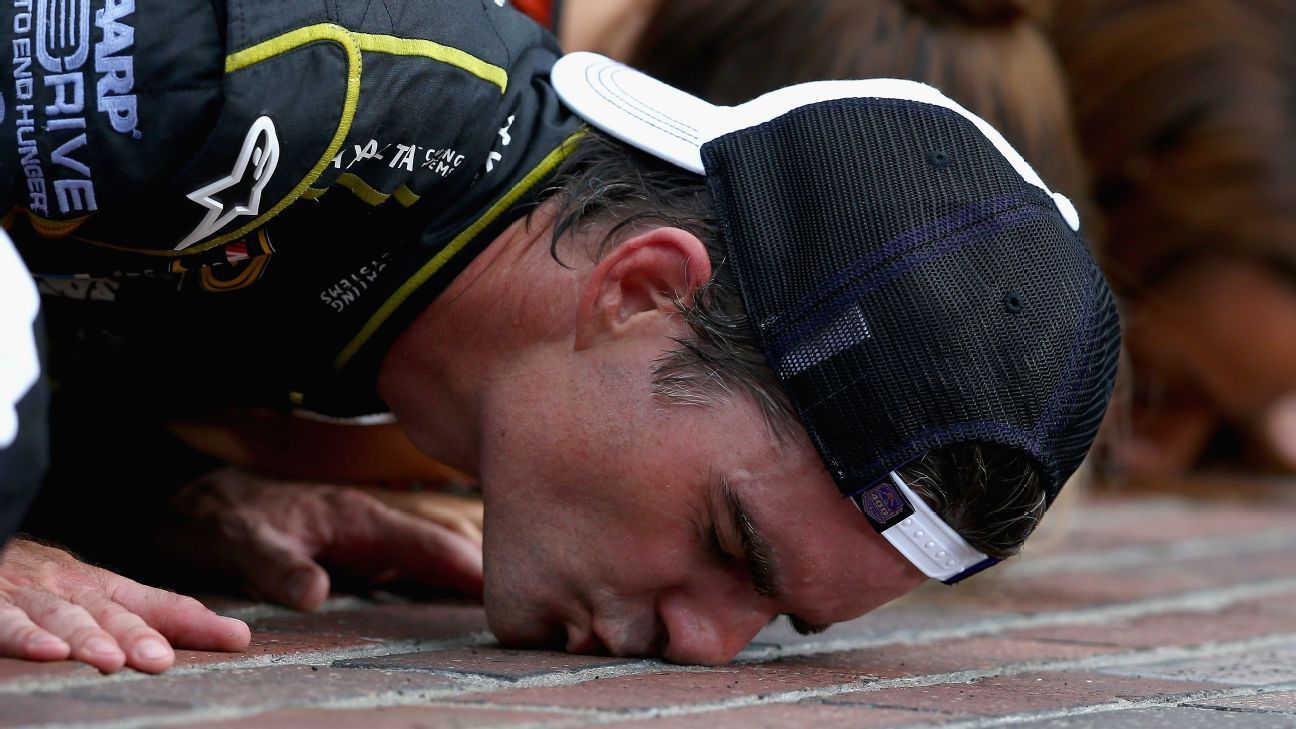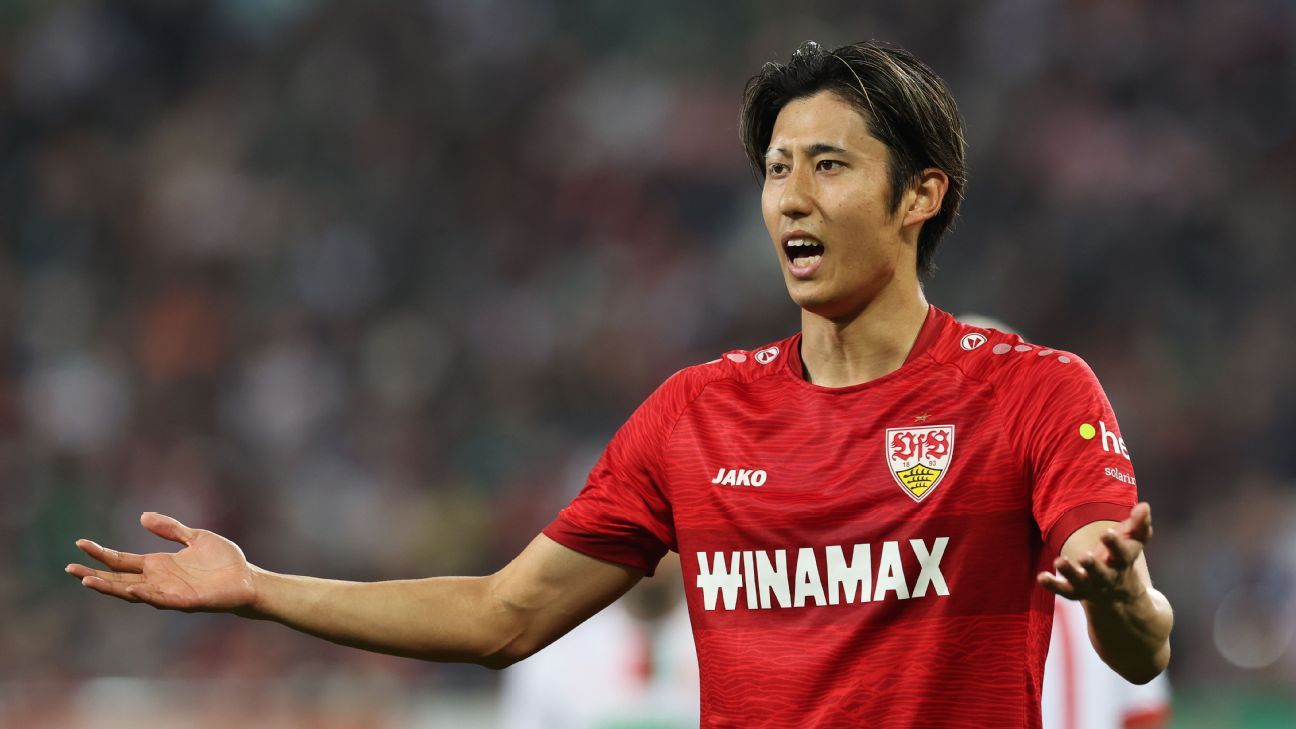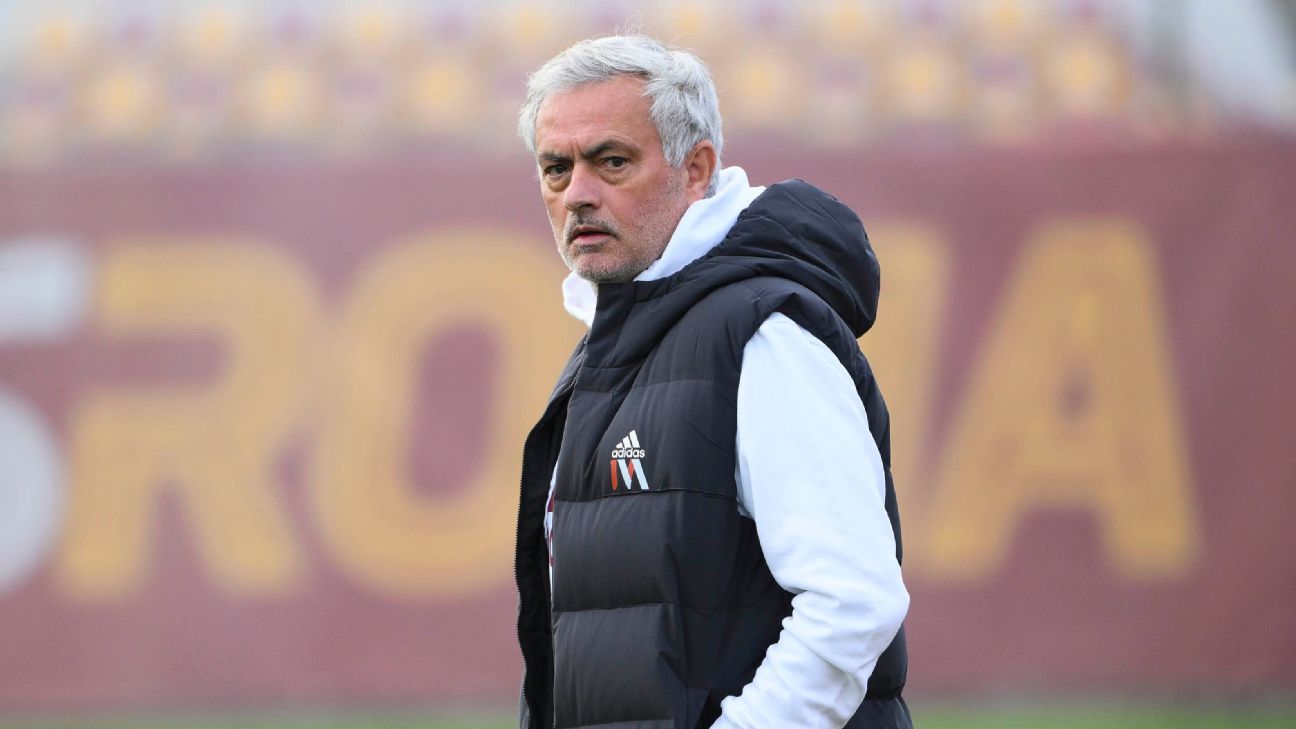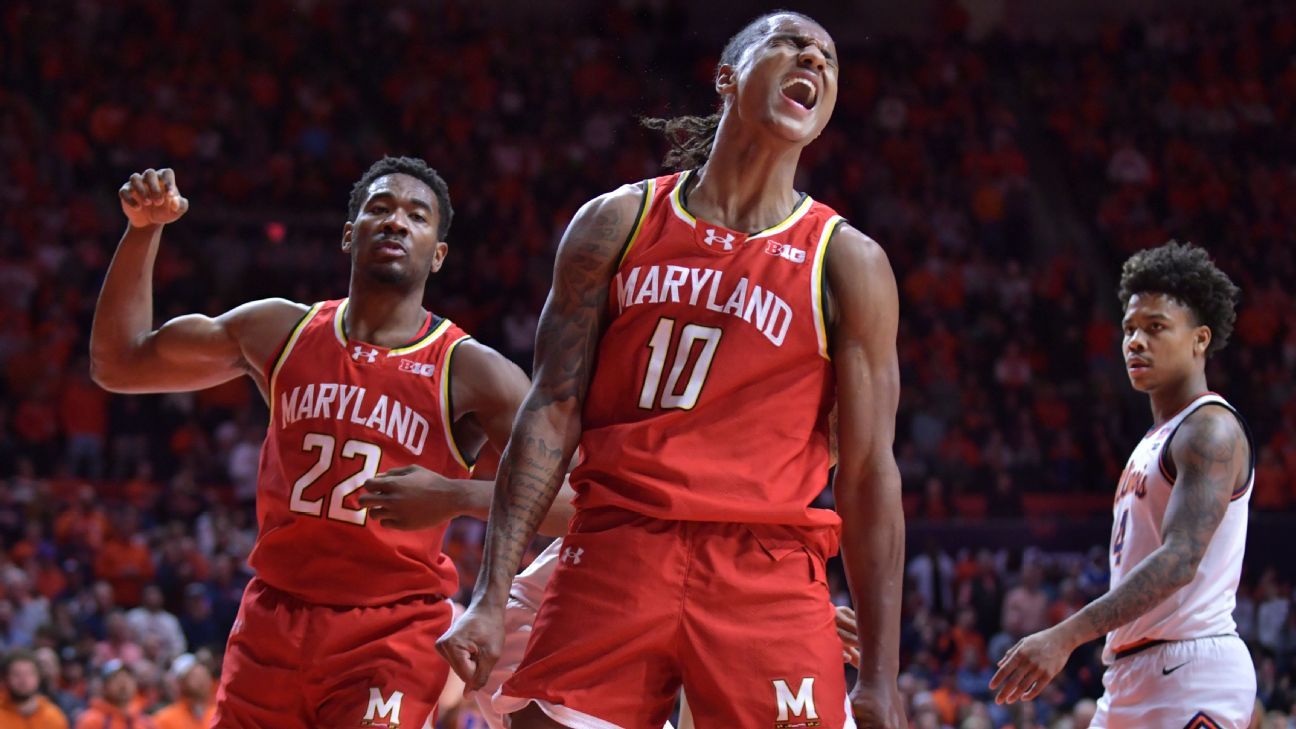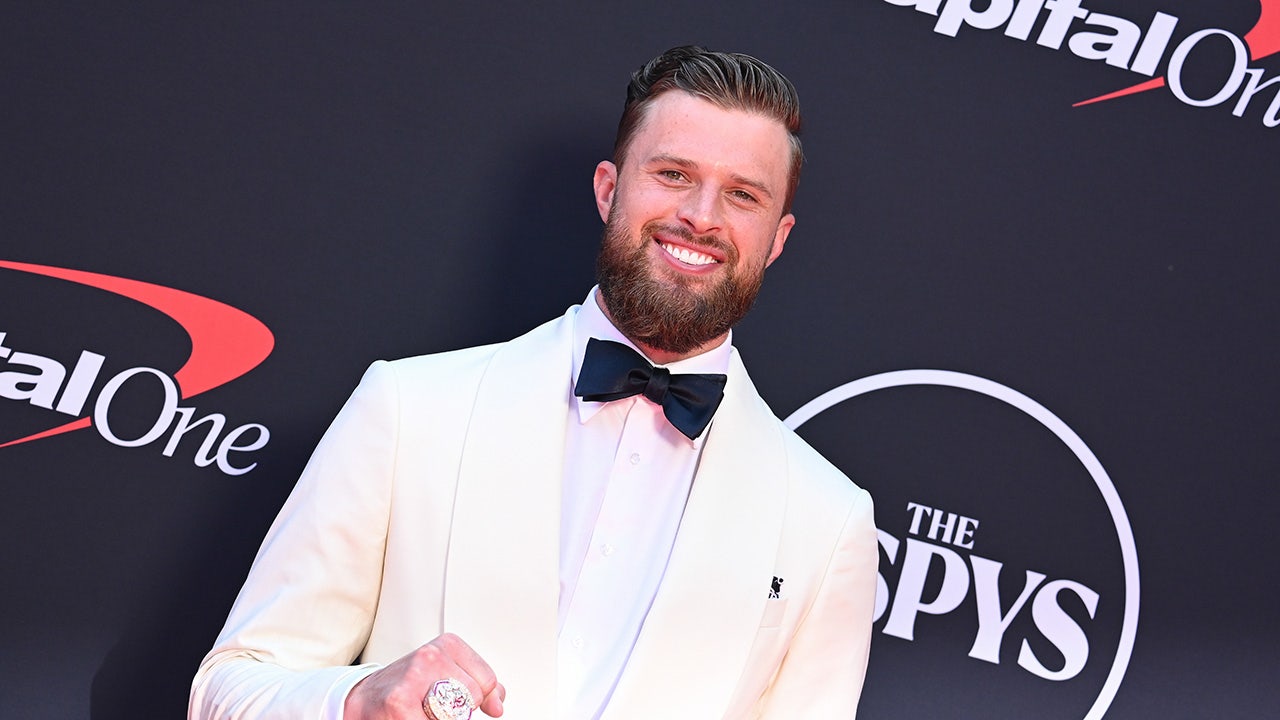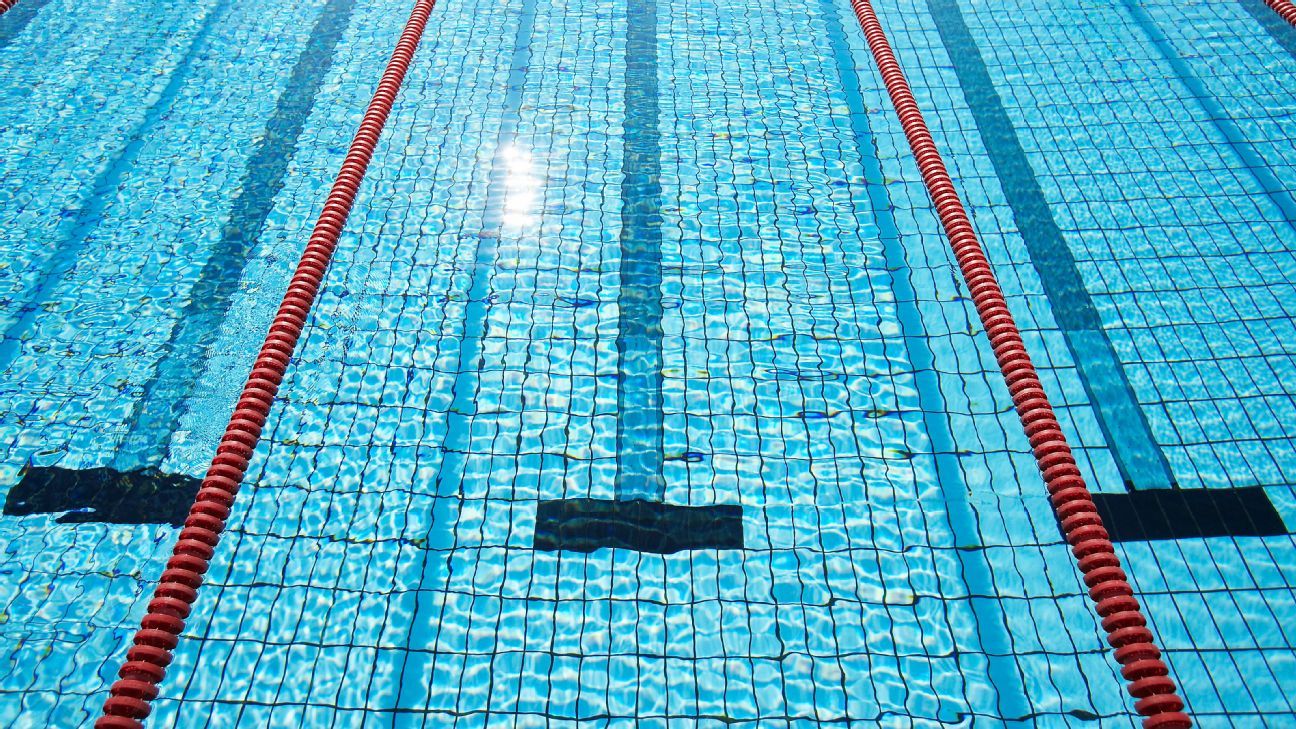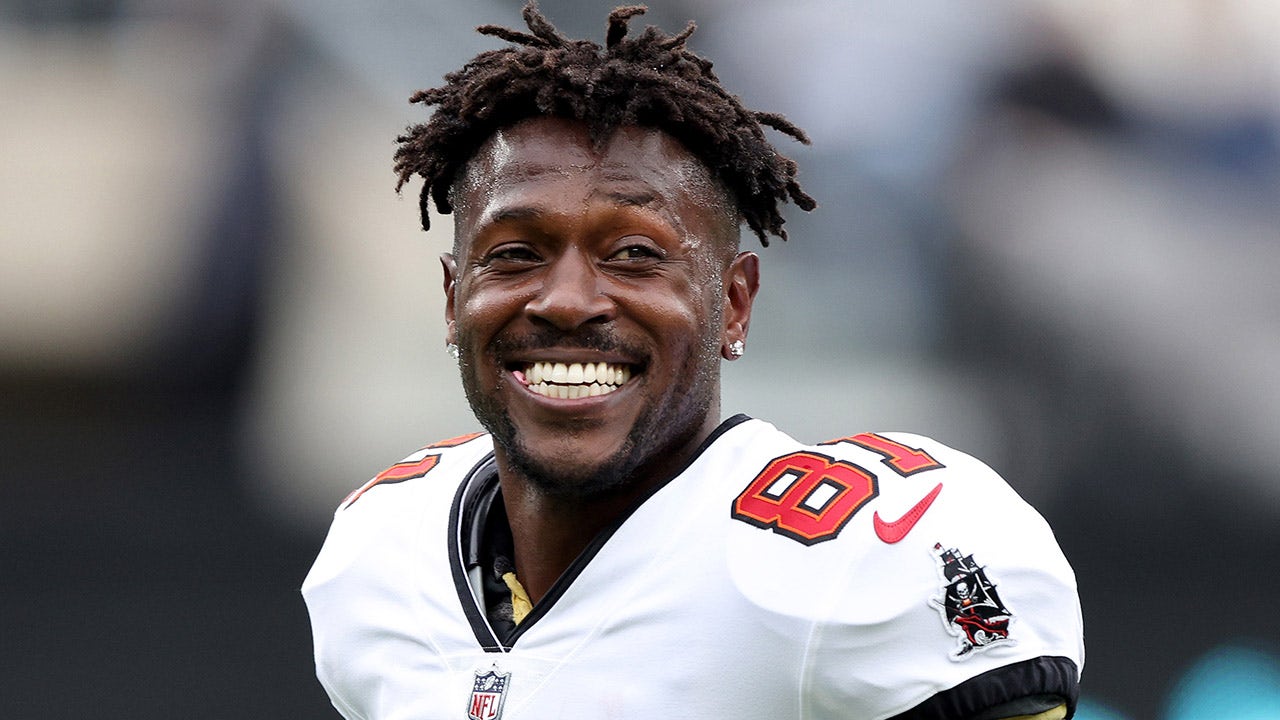Jeff Gordon wishes he could remember more details about his first Indianapolis win.
It's been 30 years since that day, August 6, 1994. A milestone that comes as quite a surprise to Gordon, who laughs at his lack of memory.
Gordon will go down in history as NASCAR's first winner at Indianapolis, an event that generated much hype and publicity as the stock cars descended on hallowed ground for open-wheel competition. Gordon, in his recognizable No. 24 Hendrick Motorsports Chevrolet, led 93 of the race's 160 laps.
“I remember the feeling and the energy of seeing so many people driving around on the check lap the most,” Gordon told ESPN. “When you first start racing, you're just thinking about your car, the execution of the race, the competitors and how you're competing with them. I think I got some good applause during the driver introductions, which was great. I was still new to NASCAR and grew up in Indiana. I wasn't sure what kind of support I was going to get. So to get that applause and go out there racing at that level, you could get a sense of when we were leading the race towards the end of the crowd reaction.
“It was a huge motivation for me. And when the race was over, seeing how many people stood by me cheering me on was a life-changing experience. Those kinds of feelings, the energy and the support I received will be something I will never forget.”
Gordon won four more times at Indianapolis, but there's nothing like the first one considering NASCAR at the Brickyard was once a distant dream.
The speedway is sacred to open-wheel purists, who did not want to see stock cars – or “cabs,” as some critics would call them – competing on the track that hosts the Indianapolis 500. Tony Hulman, who bought the Indianapolis Motor Speedway in 1945, chased NASCAR founder Bill France Sr. out of the place when the latter visited in 1954.
In the 1990s, however, something began to change. Tony George, then the track's president, welcomed the idea of NASCAR racing at the track. In 1992, the stock car series held a tire test at the Speedway with a select group of drivers, and a year later, NASCAR held an open test at Indianapolis for more than 30 of its teams.
“It was the most anticipated racing event I've ever been a part of,” Gordon said. “I've never seen so many people show up to support a test and a race. It was chaos. But it was incredible chaos because you knew you were part of something really special. So you sensed it at that moment, and I think the whole garage felt like they wanted to win that race.”
Much was tied to the first event: NASCAR at Indianapolis for the first time, Gordon being the first winner and the win being the second victory of his career.
By the time he was 20, Gordon had already experienced the fame that came with being a talented young driver. But when he arrived in Indianapolis in 1994 as a second-year NASCAR Cup Series driver, winning one of the sport's biggest races propelled him even further into stardom.
“For me to be able to compete there was something incredible and extraordinary,” Gordon said. “And even more so to be able to go there and win the race.”
NASCAR racing returns to the Indianapolis Oval on Sunday after three seasons of racing on the infield road course. It seems fitting that it falls on the 30th anniversary of the first event.
Gordon isn't the only driver with a fondness for the oval. Or, as some would say, for driving the right way down the long, even intimidating front straightaway, which makes the driver feel like he's being swallowed up by the grandstands on either side before entering Turn 1. The first lap will grab the driver's attention as he heads into a tight, flat left-hander.
“That track is special,” Gordon said of the possibility of NASCAR racing on the oval again. “I think the competitors, those who have never raced on the oval, will enjoy it, get excited about it and recognize the history of that track. The fact that we've been going to Indianapolis for 30 years and it's been 30 years since that inaugural event, there's a lot of history behind it. There's a lot of stories that can be told about what this track has meant to NASCAR and motorsports.
“Even today, I sign tickets and programs from that inaugural event. So, clearly, it stood out and stood the test of time. I think there’s definitely a piece of history that will come back to this year’s event, and I think there’s a lot of positives to that. NASCAR got to the next level in the mid-’90s because of bold moves and collaborations that they made, like with Indianapolis Motor Speedway to convince them to have a NASCAR race. ‘We know it’s an IndyCar track, but how do we make this happen? ’ They made it possible and bold moves like that kept happening and catapulted the sport to another level, and I think that should be celebrated.”
Thirty years after NASCAR first visited the Brickyard, the sport has rediscovered that enthusiasm for trying new things. Indianapolis comes two weeks after NASCAR raced on the streets of Chicago for the second consecutive year. It will be five days after the series announced that teams will have two different tire options at a points-paying race next month at Richmond.
Regardless of what NASCAR plans to do in the future, though, its fondness for Indianapolis remains. Gordon and many others caution that Sunday will be special considering the venue, but the races may not turn out to be memorable, which is what led to the introduction of the road course in 2020 in the first place.
As the four-time Cup Series champion can attest, racing on the most renowned track in the country is a feeling like no other. NASCAR has restored a jewel to its schedule by returning to the oval when it stops in Indianapolis.

